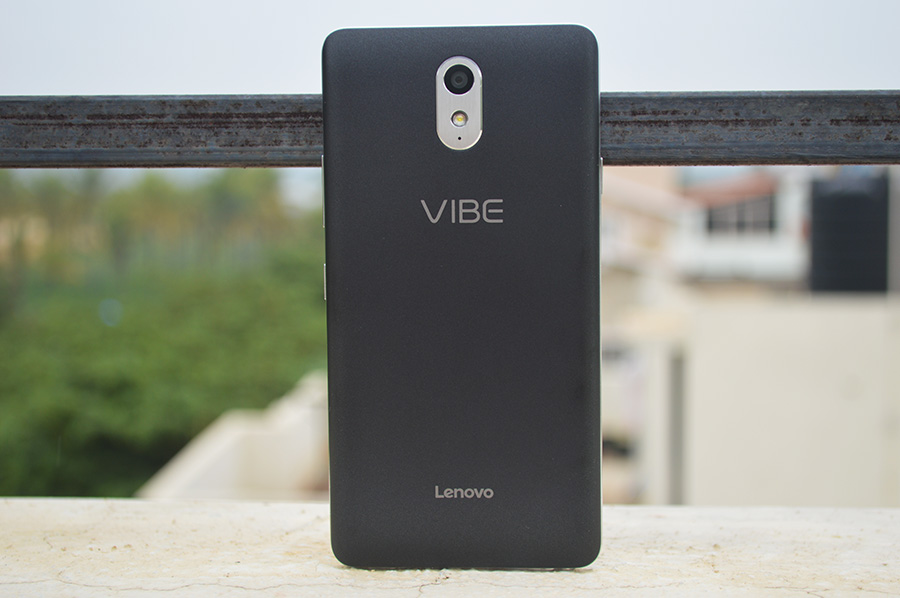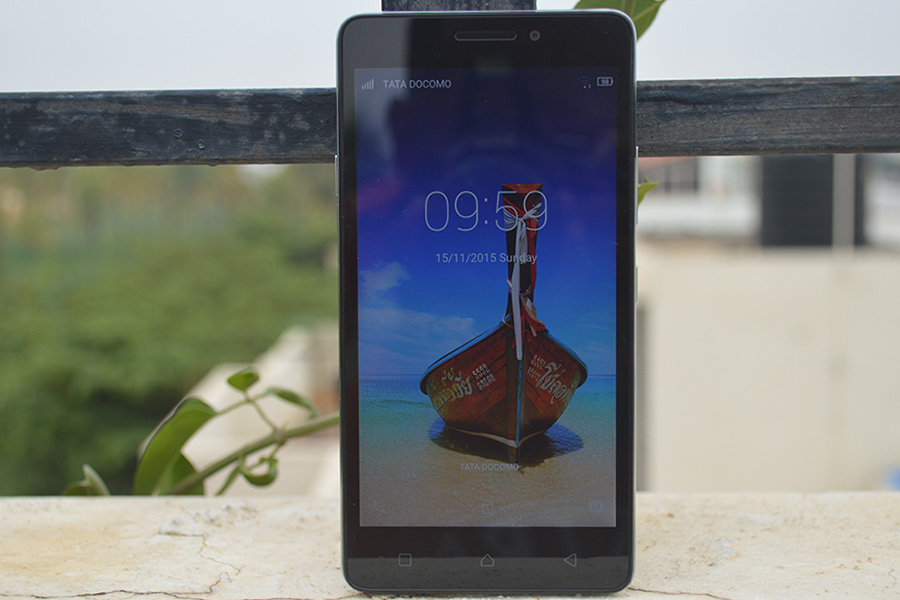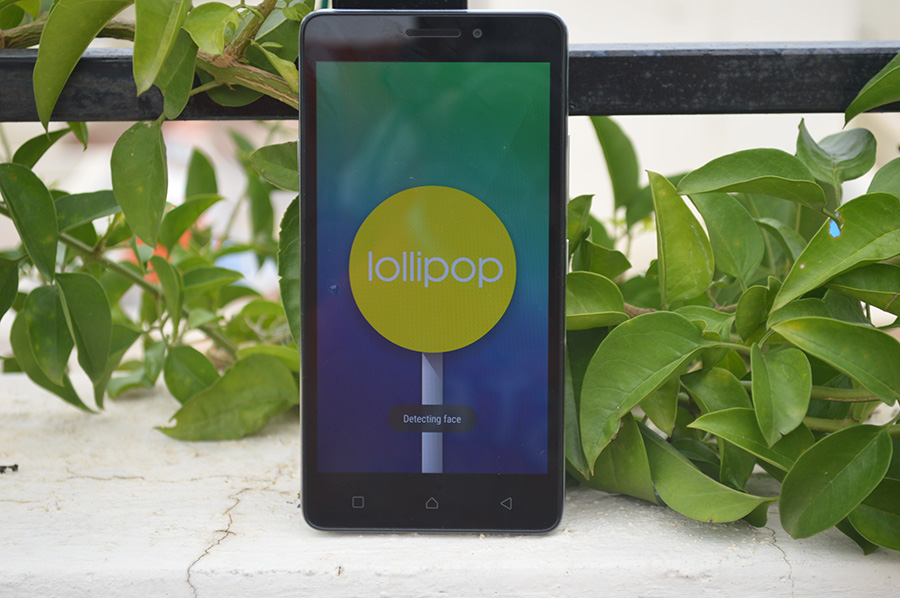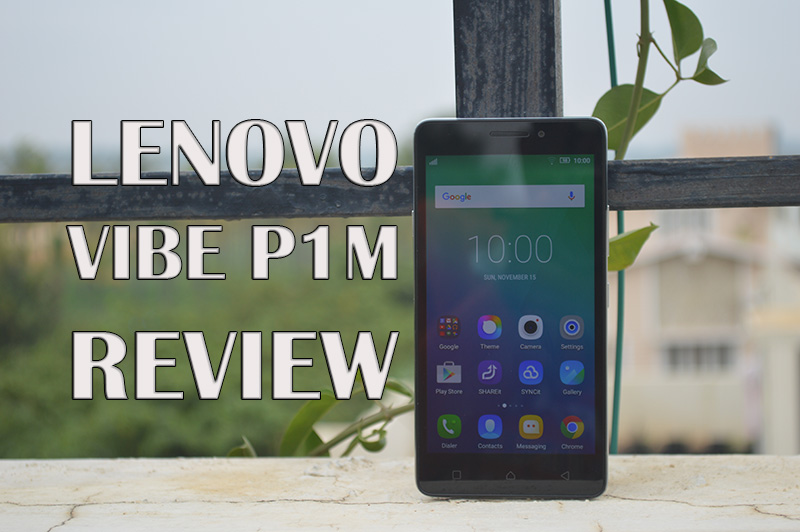While there is a phenomenal pace in mobile technology in general, there is one area lagging behind and it is the battery. An easy way out? Beef up the back. Lenovo Vibe P1m is one such phone that offers a bigger battery at a compact price and there is even a physical key for power saver mode!
Lenovo Vibe P1m specifications:
- 5 inch IPS display
- 1280 x 720 pixels HD resolution
- 1.0 GHz Quad-Core 64-bit MediaTek MT6735P
- 2GB RAM, 16GB internal memory, expandable memory up to 32GB with microSD
- Mali-T720 MP2 GPU
- Dual SIM
- Android 5.1 (Lollipop) with Vibe UI
- 8MP rear camera with LED Flash
- 5MP front-facing camera
- Dimensions: 141 x 71.8 x 9.3 mm ; Weight: 148 g
- 4G LTE / 3G HSPA+, Wi-Fi 802.11 b/g/n, Bluetooth 4.0, GPS
- OTG supported
- Non-removable Li-Po 4000 mAh battery
Lenovo has positioned their Vibe series for the premium segment and the P series for the power users looking out for productivity and longer battery life. With the Vibe P1m, they have taken cue from both and also made it affordable.
Design and build quality
When you have a big battery, the phones gets thicker to accommodate it. But Lenovo has done a good job at giving a 9.3mm waistline and a 143 grams fat. The matte finish metal frame around the sides gives a definitive character, so does both the rear sides that gently sweeps towards the edges. The curves also make the device better to hold.

The rear camera module also gets a characteristic note with a large metal frame binding both the camera and LED flash. The Vibe branding is prominent below the camera and at the bottom there is the Lenovo in a smaller font, both in a subtle, grey tone. While the polycarbonate back panel feels good, it also gets smudged easily.
The front has three capacitive buttons on the bottom which are backlit and the front camera, earpiece and sensors on the top.

While on the right side you have the standard placement of volume and power buttons, both offering a good tactile feedback. The right side has a new addition – a physical key to shift to power saver mode. Ask me and I would ask
‘but why’. Is it too much of a pain to shift to power saver mode from the quick access settings in the notification panel? On the top, you have the USB port in the middle and the 3.5mm audio jack onto the left side of it. The bottom has speaker grille in a symmetrically placed dotted design, while one set is the speaker grille, the other set is dummy with just a microphone but adds to the visual appeal.
[gallery columns="4" link="file" ids="10177,10178,10179,10180,10181,10182,10183,10184"]
Display
The Vibe P1m has a 5-inch IPS display offering a 720p resolution. While fullHD has made inroads in this price segments lately, the display of P1m leaves no room for complaints for what it is. The off-axis viewing angles are good too. There is no corning gorilla to ward off the minor scratches. The dimensions work out to a pixel density of about 294 pixels per inch (PPI), which makes for crispier texts and overall a decent display panel. While the display quality is adequate, there is an option to tune the contrast, saturation and temperature and also a dynamic contrast feature in the display settings.
Software

The Vibe P1m runs on Android 5.1 Lollipop with Vibe UI layered on top of it. Lenovo’s own customized UI is not the best I have come across but it is getting better in time. There are some truly remarkable elements like the secure zone management, an underrated feature that the company surprisingly quiet about. Unfortunately, that particular feature is shed in the P1m. There is no call recording feature too, which was surprising. Unlike the other Lenovo Vibe models, the theme centre does not have options for granular custom changes to boot-up animations nor the lock screen styles.
There is no app drawer and we have multiple homescreens to rests the apps. The notification centre has the quick access settings but cannot be rearranged or edited. There is smart standby mode which when enabled detects the face and keeps the screen on while in use. In the security tab, there is a voice unlock which failed four out of five times to recognize my voice. In short, the Vibe UI in P1m is slightly skimmed but not clumsy to use.
https://youtu.be/-jaZwAfxbCY
Performance
Lenovo has opted for a MediaTek chipset and we have a quad-core processor clocked at 1.0GHz, coupled with a 2GB of RAM, Mali T720 MP2 GPU. There is a 16GB of internal storage with an option to expand it up to 32GB via a microSD card.
The spec sheet is not a sizzler when pitted against the competing models in its price band. The AnTuTu benchmark was around 21,000 which is not that impressive. While I didn’t really feel any lag in the day to day normal usage, though I encountered couple of frozen moments, when I had to reboot the system. I also have to mention that I did not encounter any such instances after a minor software update the device received, not sure it was related. The Vibe P1m is clearly not a gamer’s device. It underperforms at graphics, though you could play most games at low to medium graphics settings, if you are a serious gamer, you can give it a miss. On the other hand, if you are a casual gamer, you might actually like this device due to the fact that you might still be left with battery after few bouts of gaming, since the battery is the big plus for the device. Another pleasant observation, the P1m does not heat up while gaming and it is on a better standing compared to most other Smartphones.
Out of the 16GB of internal storage, around 11.5 GB is user available. You can also install the apps on the external memory card.
Talking about the audio quality, the call quality was decent. While the speaker output is loud enough, I wished Lenovo has included the Dolby Atmos feature we had seen in A7000, it would have made the audio experience for media consumption.
The Vibe P1m body gets a nano-coating technology, it protects the phone from everyday splashes and spills but don’t try dunking the device in water.
Camera
Traditionally camera has been a weaker spot for Lenovo in the budget offerings. Of course, they have an impressive camera setup on the Vibe Shot, their flagship device but it cannot be said about the sub-10K segment. Having said that, they have been improving here with every new devices.
The Vibe P1m is equipped with a 8MP rear camera with LED flash and a 5MP front camera. There is no OIS but the camera offsets it partially by being snappier. The camera interface is similar to the K3 Note and the modes are limited to normal, Panorama and HDR and with four filters thrown in. It can take video on 720p and for max 30 minutes.
Day light shots are good with fairly good color reproduction, it also managed decently well the low light pictures. The dynamic range suffers a bit when exposed to a mix of lighting in the frame. Overall, the Vibe P1m has better tuned camera in the Lenovo’s budget offerings and for daily clicks it can sail through.
https://youtu.be/DsJYrlLNiyY
Battery
The selling point of the Vibe P1m is the battery pack and it boasts of a 4000mA. Let me say it is power-packed. Of late, I have not used a phone which could take me through 1.5 to 2 days with moderate usage. You have the battery-drainer facebook app and messenger running on the background and still not worry about the battery.
Then there is the battery saver mode that can be toggled using the left-side slider. It is one of the best laid out power save mode I have seen. It shifts the phone to a stripped down mode in black and white layout and with essential functionality to conserve the remaining battery for the maximum duration.
Verdict
The Lenovo Vibe P1m enjoys an enviable position in the under Rs 10,000 segment where there is a cut-throat competition amongst the rivals. While the rivals preys on each other by pushing ahead the tech specs, the Vibe P1m priced at Rs 7,999, has one ace up its sleeves and that is the massive battery under its hood. The rivals loose out on this. Combined with a decent build quality and performance, the Vibe P1m is for those who pick better battery performance to enhance their productivity.
]]>

 The rear camera module also gets a characteristic note with a large metal frame binding both the camera and LED flash. The Vibe branding is prominent below the camera and at the bottom there is the Lenovo in a smaller font, both in a subtle, grey tone. While the polycarbonate back panel feels good, it also gets smudged easily.
The front has three capacitive buttons on the bottom which are backlit and the front camera, earpiece and sensors on the top.
The rear camera module also gets a characteristic note with a large metal frame binding both the camera and LED flash. The Vibe branding is prominent below the camera and at the bottom there is the Lenovo in a smaller font, both in a subtle, grey tone. While the polycarbonate back panel feels good, it also gets smudged easily.
The front has three capacitive buttons on the bottom which are backlit and the front camera, earpiece and sensors on the top.
 While on the right side you have the standard placement of volume and power buttons, both offering a good tactile feedback. The right side has a new addition – a physical key to shift to power saver mode. Ask me and I would ask ‘but why’. Is it too much of a pain to shift to power saver mode from the quick access settings in the notification panel? On the top, you have the USB port in the middle and the 3.5mm audio jack onto the left side of it. The bottom has speaker grille in a symmetrically placed dotted design, while one set is the speaker grille, the other set is dummy with just a microphone but adds to the visual appeal.
[gallery columns="4" link="file" ids="10177,10178,10179,10180,10181,10182,10183,10184"]
While on the right side you have the standard placement of volume and power buttons, both offering a good tactile feedback. The right side has a new addition – a physical key to shift to power saver mode. Ask me and I would ask ‘but why’. Is it too much of a pain to shift to power saver mode from the quick access settings in the notification panel? On the top, you have the USB port in the middle and the 3.5mm audio jack onto the left side of it. The bottom has speaker grille in a symmetrically placed dotted design, while one set is the speaker grille, the other set is dummy with just a microphone but adds to the visual appeal.
[gallery columns="4" link="file" ids="10177,10178,10179,10180,10181,10182,10183,10184"]
 The Vibe P1m runs on Android 5.1 Lollipop with Vibe UI layered on top of it. Lenovo’s own customized UI is not the best I have come across but it is getting better in time. There are some truly remarkable elements like the secure zone management, an underrated feature that the company surprisingly quiet about. Unfortunately, that particular feature is shed in the P1m. There is no call recording feature too, which was surprising. Unlike the other Lenovo Vibe models, the theme centre does not have options for granular custom changes to boot-up animations nor the lock screen styles.
There is no app drawer and we have multiple homescreens to rests the apps. The notification centre has the quick access settings but cannot be rearranged or edited. There is smart standby mode which when enabled detects the face and keeps the screen on while in use. In the security tab, there is a voice unlock which failed four out of five times to recognize my voice. In short, the Vibe UI in P1m is slightly skimmed but not clumsy to use.
https://youtu.be/-jaZwAfxbCY
The Vibe P1m runs on Android 5.1 Lollipop with Vibe UI layered on top of it. Lenovo’s own customized UI is not the best I have come across but it is getting better in time. There are some truly remarkable elements like the secure zone management, an underrated feature that the company surprisingly quiet about. Unfortunately, that particular feature is shed in the P1m. There is no call recording feature too, which was surprising. Unlike the other Lenovo Vibe models, the theme centre does not have options for granular custom changes to boot-up animations nor the lock screen styles.
There is no app drawer and we have multiple homescreens to rests the apps. The notification centre has the quick access settings but cannot be rearranged or edited. There is smart standby mode which when enabled detects the face and keeps the screen on while in use. In the security tab, there is a voice unlock which failed four out of five times to recognize my voice. In short, the Vibe UI in P1m is slightly skimmed but not clumsy to use.
https://youtu.be/-jaZwAfxbCY

